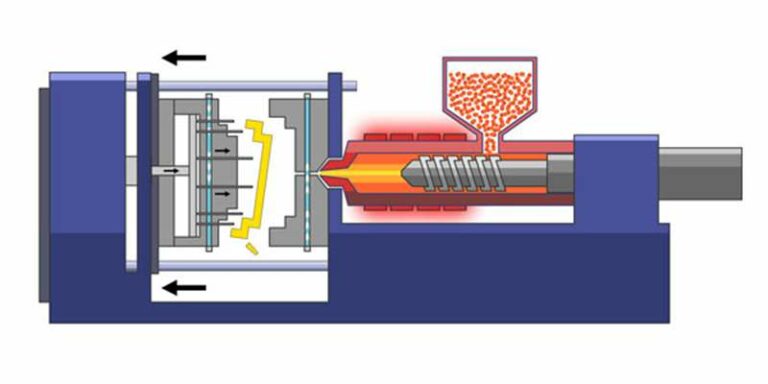The Future of Plastic Injection Molding: Advancements and trends to See
As the plastic shot molding market advances, several key fads are arising that guarantee to reshape its landscape. Automation and clever manufacturing strategies are set to enhance performance, while the shift in the direction of lasting materials mirrors a growing ecological awareness.
Automation and Smart Manufacturing
As the plastic injection molding industry develops, automation and clever production are taking center phase, revolutionizing production procedures - Plastic Injection Molding. The integration of sophisticated modern technologies such as robotics, IoT (Net of Things), and expert system is making it possible for makers to enhance effectiveness, reduce operational prices, and improve item quality. Automated systems enhance operations, reducing hand-operated intervention and boosting throughput, which is crucial in meeting the climbing need for fast manufacturing cycles
Smart manufacturing innovations promote real-time monitoring and data analysis, permitting companies to enhance equipment performance and anticipate upkeep demands. This proactive method not only lessens downtime yet also prolongs the life-span of tools. Moreover, using collective robotics, or cobots, boosts the versatility of assembly line, enabling makers and employees to run alongside safely and efficiently.
The fostering of automation in plastic shot molding is not just a fad yet a critical essential for services aiming to stay competitive in a global market. By utilizing these technologies, producers can achieve greater precision, decrease waste, and adapt promptly to transforming consumer needs, positioning themselves for sustainable development in a significantly computerized future.
Lasting Products and Practices
The press towards automation and smart production has actually led the way for a greater focus on lasting materials and practices within the plastic shot molding market. Companies are increasingly looking for environment-friendly options to typical petroleum-based plastics, bring about the adoption of bio-based and recycled products. These sustainable materials not just decrease ecological effect but likewise line up with consumer need for greener products.

Furthermore, partnership between makers, material vendors, and ecological organizations is promoting innovation in the development of sustainable products that satisfy performance criteria without endangering top quality. As regulations around plastic use come to be more stringent, the sector is poised to adjust by welcoming these sustainable techniques, making sure lasting stability and decreasing dependence on non-renewable sources. The combination of sustainability right into plastic injection molding is not just a trend; it is coming to be a vital component of company obligation and operational quality.
Advancements in 3D Printing
Current developments in 3D printing technology are considerably transforming the landscape of plastic shot molding. Difficult or when tough to accomplish via standard techniques, the integration of additive production processes enables for the rapid prototyping of complicated geometries that were. This capacity not only increases product advancement cycles but additionally decreases product waste, aligning with the growing need for sustainable manufacturing techniques
Moreover, the introduction of crossbreed manufacturing strategies, which combine 3D printing and shot molding, offers producers the capacity to create elaborate layouts while maintaining the efficiency of mass production. This strategy allows the manufacturing of customized parts customized to details customer requirements without sacrificing the speed and scalability that injection molding supplies.
In addition, advancements in materials, such as high-performance polymers and composites particularly made for 3D printing, are boosting the practical capacities of published components. These materials can endure higher anxiety and show boosted thermal residential or commercial properties, making them appropriate for more requiring applications.
As 3D printing remains read more to evolve, its integration into plastic injection molding processes promises to enhance productivity, reduce costs, and foster innovation in product style, positioning makers to better satisfy the challenges of an open market.
Data Analytics and IoT Assimilation
Information analytics and the combination of the Web of Things (IoT) are reinventing plastic shot molding by offering producers with unprecedented insights right into their procedures. By leveraging real-time data collected from interconnected equipments and sensors, makers can check efficiency metrics, determine inefficiencies, and optimize manufacturing processes. This data-driven approach promotes anticipating maintenance, minimizing downtime and prolonging equipment life-span.
Moreover, IoT integration allows for boosted high quality control. By continuously tracking variables such as temperature level, cycle, and stress times, manufacturers can quickly spot deviations from developed specifications and make adjustments investigate this site in genuine time. This not only enhances product uniformity yet likewise lowers waste and scrap rates.
The blend of data analytics and IoT modern technologies additionally equips makers to adopt even more agile production approaches. With access to extensive data analytics, organizations can react to market demands with higher adaptability, adjusting manufacturing timetables and configurations as needed. This flexibility is important in a rapidly altering production landscape.

Customization and Design Flexibility
Just how can modification and style adaptability boost the competitiveness of plastic injection molding? Personalization permits suppliers to satisfy particular customer requirements, accommodating one-of-a-kind dimensions, forms, and performances that standard items might not my website fulfill.
Innovations in style technologies, such as computer-aided style (CAD) and quick prototyping, additional bolster this pattern. These devices allow developers to create complex patterns and complicated geometries, which can be seamlessly incorporated right into the production procedure. Because of this, makers can react promptly to altering customer preferences and market demands.
Moreover, the implementation of modular tooling systems improves layout flexibility, enabling quicker changes between different item layouts without considerable downtime. This adaptability can cause minimized preparations and lower manufacturing prices, making firms much more affordable and agile. Eventually, accepting modification and layout flexibility in plastic injection molding not only raises item offerings however additionally reinforces market positioning in an ever-evolving landscape.
Conclusion
The future of plastic injection molding is characterized by substantial innovations in automation, lasting methods, and innovative products. Personalization with modular tooling and rapid prototyping will certainly enable manufacturers to continue to be competitive and responsive to the vibrant needs of the market.

The future of plastic shot molding is characterized by significant developments in automation, sustainable methods, and cutting-edge products.